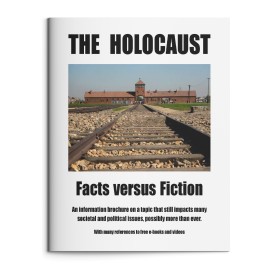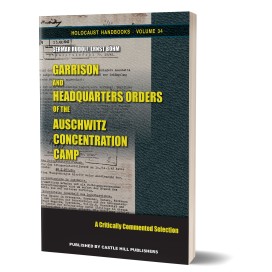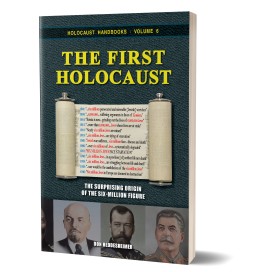Cyrus Cox: Auschwitz – Forensically Examined
2nd edition, Bargoed: Castle Hill Publishers, 2023
Language: English
Description
It is amazing what modern forensic crime-scene investigations can find out. This is also true for the Holocaust. There are many big tomes about this, such as Rudolf’s 400+ page book on the Chemistry of Auschwitz, or Mattogno’s 1200-page work on the crematoria of Auschwitz. But who reads those door-stops? Here is a booklet that condenses the most-important findings of Auschwitz forensics into a nut-shell, quick and easy to read.
This booklet of 124 pages offers an overview of the various forensic investigations on Auschwitz carried out so far. In the first section, the forensic investigations of the following authors are reviewed and compared: Soviet Commission (1945); Jan Sehn, Roman Dawidowski and Jan Robel (Poland 1945), Gerhard Dubin (Austria 1972), Fred Leuchter (Canada 1988), Germar Rudolf (Germany 1991, 2017), Carlo Mattogno and Franco Deana (Italy 1994, 2003, 2015), Willy Wallwey (Germany 1998) and Heinrich Köchel (Germany 2004/2015).
In the second section, the most-important results of these studies are summarized in such a way as to making them accessible to everyone. The main arguments focus on two topics. The first concerns chemical and toxicological properties of the agent said to have been used at Auschwitz for mass murder – Zyklon B – as well as the question of whether it has left traces in the masonry of the claimed execution gas chambers which can be detected analytically to this day. The second topic deals with mass cremations of bodies in crematoria on the one hand and on pyres on the other, which are said to have been carried out outdoors. Did the crematoria of Auschwitz have the required capacity to cremate the many hundreds of thousands of victims of the claimed mass murder? Do air photos taken by Allied reconnaissance aircraft over Auschwitz in 1944 confirm witness statements reporting huge smoking pyres? Find the answers to these questions in this booklet, together with many references to source material and further reading.
The third section reports on how the establishment has reacted to these research results: initially with skepticism and curiosity, but then increasingly with censorship and persecution. At the end, this book asserts that we all must have the right and the moral obligation to peacefully resist such dictatorial suppression of scholarly research.
If you want to read the results of forensic research on Auschwitz in a nutshell, this is the booklet to get.
128 pages, paperback, 5"×8", illustrated, bibl., index
Similar products
Castle Hill Publishers: The Holocaust: Facts versus Fiction – An information brochure on a topic that still impacts many societal and political issues, possibly more than ever
Ernst Böhm, Germar Rudolf: Garrison and Headquarters Orders of the Auschwitz Concentration Camp – A Critically Commented Selection
Don Heddesheimer: The First Holocaust – The Surprising Origin of the Six-Million Figure





